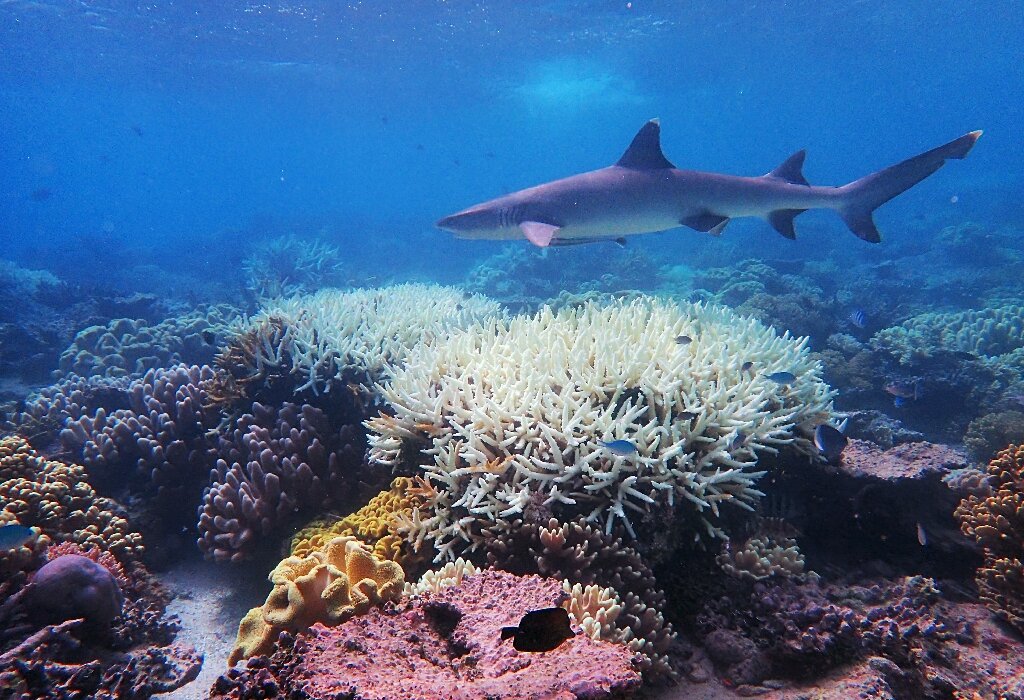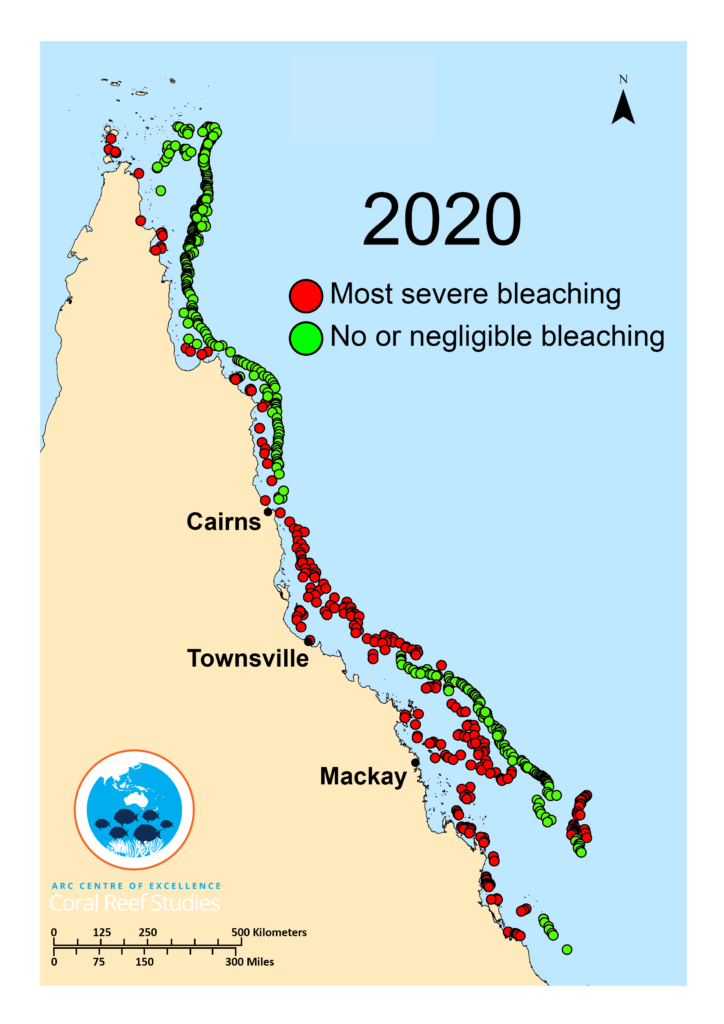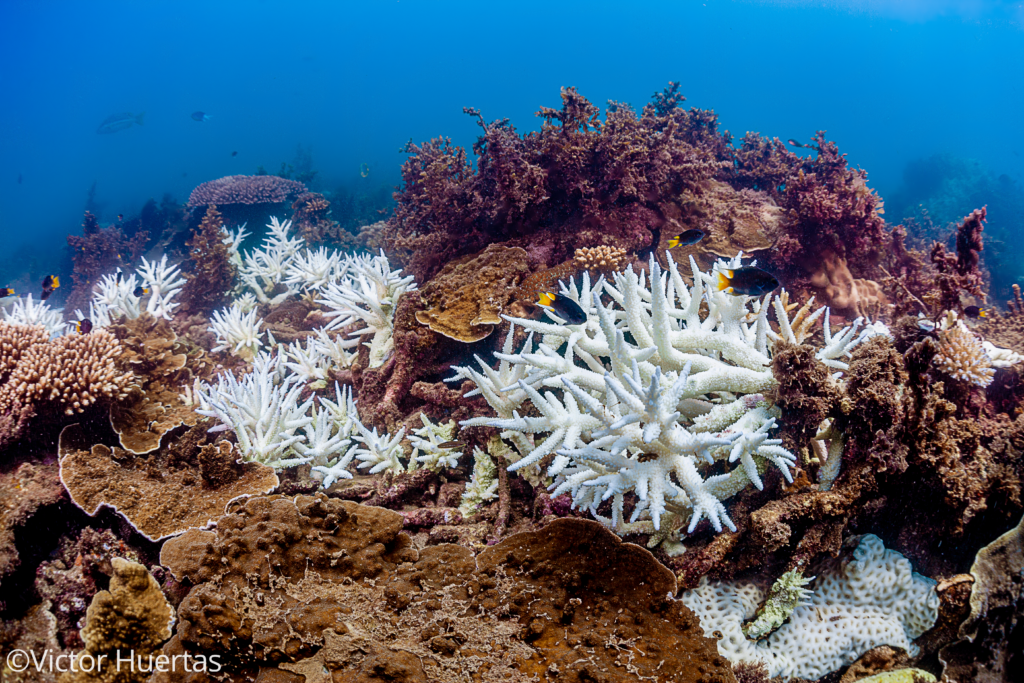
Australia’s Great Barrier Reef has suffered its most widespread coral bleaching on record, scientists say. The GBR is a World Heritage site and Earth’s largest coral reef system. Image: Coral COE/James Cook University.
After catastrophic fires, Australia’s long hot summer of 2019-2020 leaves widespread damage to the world’s largest coral reef ecosystem
APRIL 2020
Their worst fears confirmed, Australian scientists report that the iconic Great Barrier Reef is experiencing its third coral bleaching event in just five years. The 2020 bleaching is severe, and more widespread than earlier events.
“We surveyed 1,036 reefs from the air during the last two weeks in March, to measure the extent and severity of coral bleaching throughout the Barrier Reef region,” said Professor Terry Hughes, Director of the ARC Centre of Excellence for Coral Reef Studies at James Cook University.
“For the first time, severe bleaching has struck all three regions of the Great Barrier Reef – the northern, central and now large parts of the southern sectors,” Prof Hughes said.
Coral bleaching at regional scales is caused by thermal stress due to spikes in sea temperatures during unusually hot summers. The first recorded mass bleaching event along the Great Barrier Reef occurred in 1998, then the hottest year on record. Four more mass bleaching events have occurred since—as more temperature records were broken—in 2002, 2016, 2017, and now in 2020.
Watch Video: It’s Happened Again—Mass Coral Bleaching
This year, February had the highest monthly temperatures ever recorded on the Great Barrier Reef since the Bureau of Meteorology’s sea surface temperature records began in 1900.
“Bleaching isn’t necessarily fatal, and it affects some species more than others,” said Professor Morgan Pratchett, also from Coral CoE at JCU, who led underwater surveys to assess the bleaching.
“A pale or lightly bleached coral typically regains its colour within a few weeks or months and survives,” he said.
However, many corals die when bleaching is severe. In 2016, more than half of the shallow-water corals died on the northern region of the Great Barrier Reef.
“We will go back underwater later this year to assess the losses of corals from this most recent event,” Prof Pratchett said.
“The north was the worst affected region in 2016, followed by the central region in 2017. In 2020, the cumulative footprint of bleaching has expanded further to include the south.”
The distinctive footprint of each bleaching event closely matches the location of hotter and cooler conditions in different years.
“As summers grow hotter and hotter, we no longer need an El Niño event to trigger mass bleaching at the scale of the Great Barrier Reef,” Prof Hughes said.
“Of the five events we have seen so far, only 1998 and 2016 occurred during El Niño conditions.”
The gap between recurrent bleaching events is shrinking, hindering a full recovery.
“We have already seen the first example of back-to-back bleaching—in the consecutive summers of 2016 and 2017,” Prof Hughes said.
After five bleaching events, the number of reefs that have so far escaped severe bleaching continues to dwindle. Those reefs are located offshore, in the far north, and in remote parts of the south.
References & Sources





